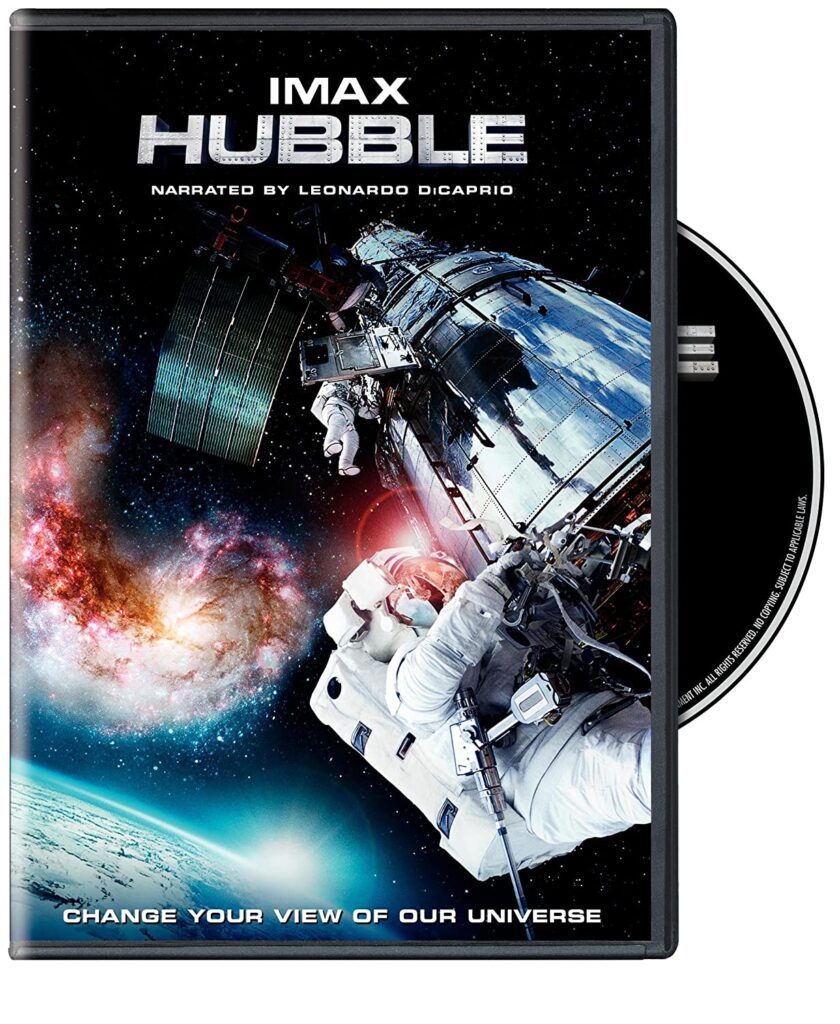
After seeing IMAX: Hubble, I am kicking myself for not having ventured to the local theatre to see it in all its glory. If ever there was a use for IMAX, it is the way it was put to work chronicling the last ever visit to the orbiting Hubble telescope. The shots are truly magnificent. Thankfully, a lot of this glory is available to us via DVD now though, with the recent release of IMAX: Hubble.
Narrator Leonardo DiCaprio does an outstanding job of explaining the Hubble and its origins in the opening minutes of the documentary. The Hubble was an enormous undertaking; the original telescope took ten years to construct. When it was launched in 1990, its orbit was 320 miles above Earth. The intial views beamed back to us from space were uncanny. But there was almost immediate trouble. Space is not static, and debris plagued the telescope almost from the start.
A number of missions were made to repair and upgrade the telescope. But the one launched May 11, 2009 was to be the final one. This is the one the IMAX cameras followed. The footage they returned with was nothing short of spectacular.
We begin as the astronauts begin: training to become accustomed to weightlessness in the 6,000 square foot NASA pool. The 3D IMAX cameras are especially adept at capturing images in water; you truly feel as if you are in the pool yourself. From these training exercises we travel to the launch pad. This is some of the most incredible footage of all, as the cameras are stationed in massively fortified boxes around the perimeter, in places no human could ever stand.
Lift-off is an amazing display of fire and power, the amount of energy it takes to send the shuttle off is incredible. Once in orbit, there is a surprising feeling of calm throughout the shuttle. Everyone has their jobs to do, to be sure, and this is no leisurely cruise in any way, yet the mood inside is one of calm professionalism.
This is also where some of the most gorgeous shots of space outside our atmosphere began to be seen. Words cannot begin to describe the stunning array of colors and shapes that exist out there. At times I kept pinching myself – to remind me that these are not computer-generated images, as we have all come to be so used to. These pictures are the genuine artifact, the real deal as it were. Even though my TV room is not set up as an IMAX theatre (still working on it), the frames that the Hubble has captured are quite simply magnificent.
Some of the highlights are shot basically just out the window, such as the first full image of our Earth, the big, blue marble. There is another truly beautiful bit of footage as the shuttle is hovering over Hawaii, and we look down from hundreds of miles in space at the islands.
The purpose of this trip was to install a special infra-red lens, which will enable the Hubble to penetrate ten billion light years away. These images, enhanced by IMAX, are unbelievable, and represent the furthest mankind has ever reached into space. This is absolutely one of a kind footage – as the cliché goes “The stuff dreams are made of.”
Although it saddens me that due to budget constraints this will be the final visit to the Hubble, it is gratifying that the IMAX people were able to capture such an incredible event. The IMAX: Hubble DVD is 44 minutes in length, however there is also a eight-minute documentary titled “Inside IMAX’s Hubble 3D” featuring interviews with some of the astronauts and the filmmakers involved in the project.
IMAX: Hubble is highly recommended for anyone interested in what is out there – and just how beautiful it actually is.